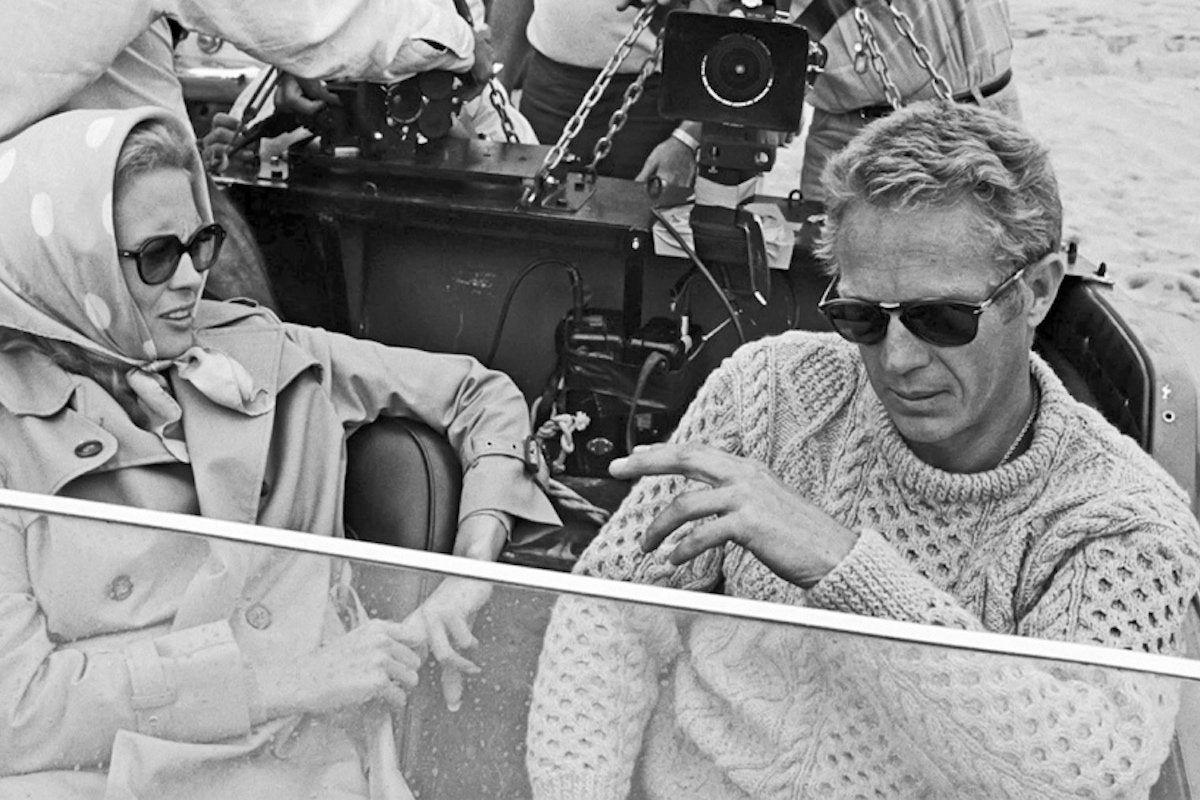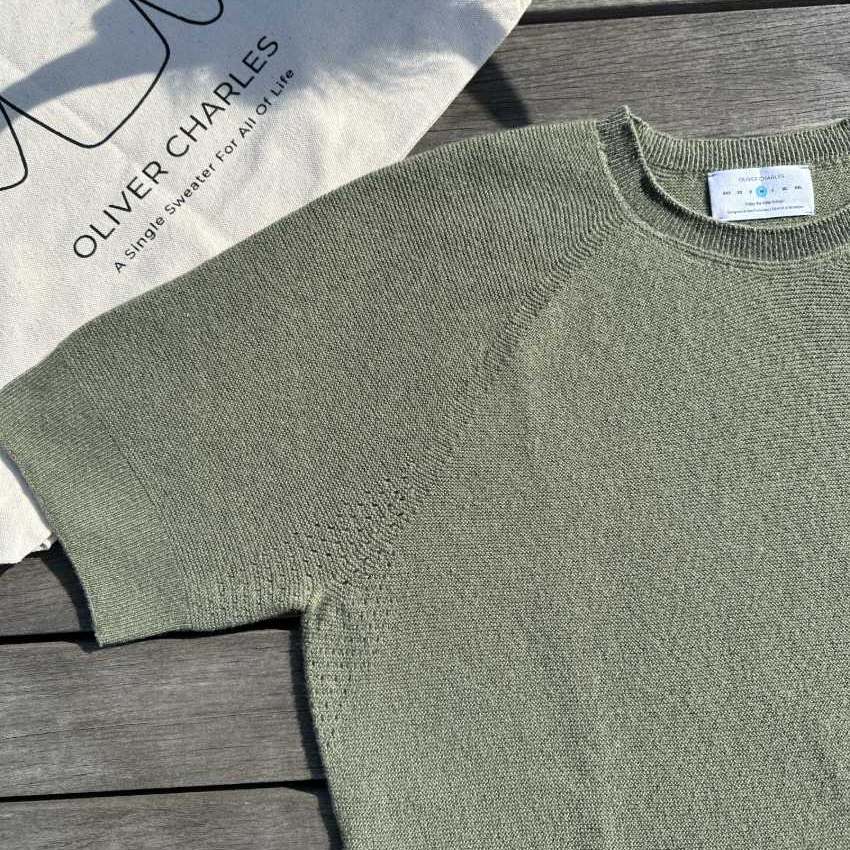Culture Of The Sweater Through Time
A new sustainable outlook will shape the culture of the future in the way sweaters shaped the culture of the past.
July 9, 2021
By
Rachel Brooks
The psychology of warmth, comfort, and durability gives sweaters a collective human appeal. From old to young, sweaters are a staple of comfort.
We form relationships with our clothing, says fashion psychologist Dr. Dawn Karren, who noted how the new culture of clothing has been defined by a need to wear what makes us feel good.
Hardily made, the sweater can encourage confidence in the wearer across a wide board of professions. This has built a culture around the sweater that stretches back hundreds of years, shaping and molding the tastes of professionals throughout time.
For a journalist, I was drawn to the culture of the sweater that developed around professional perseverance, efficiency for the job, comfort, and class.
Culture has been shaped and molded around the sweater. Conversely, sweaters have shaped professional culture, holding a strong influence over national expressions in the professional space.

Fisher’s Gansey
📸 by Gentleman's Journal
Pop-Songs And Ugly Christmas Sweaters Are Only A Part Of The Full Culture
Sweaters are a part of our pop culture. The ugly Christmas sweater comes to mind as a Christmas tradition inspired by the 80s sitcom.
Yet, sweaters themselves have been evocative of certain moods in popular culture, inspiring such sweater-theme pop music hits as “Sweater Weather” by The Neighborhood, and Taylor Swift’s “Cardigan.”
Today, the global culture of the sweater is shaping 2021 fashion trends from the changing thought of a new Millennia and the status of a world emerging from pandemic.
The COVID-19 pandemic reshaped the way many of us approached fashion and redefined how collective fashion groups defined the “business casual” look.
From this reconditioning of business culture, a new sweater popularity emerges with the same promise of trend staple as the sweater culture of previous generations.
The post-COVID fashion thought is forward-thinking with much bolder designs emerging from the stasis of former trends.

From Pilgrim Mother’s Spinning Wheel To Green Awareness
Sweaters are truly older than the Pilgrim Mother’s spinning wheel for, as it would turn out, sweaters have their place in the history of many cultures, even before they were known by that name.
For the Irish, the sweater became an artisan craft. In Ireland, the rural Aran sweater developed around an insular community, and became an ‘international icon.’ The fishermen of Aran needed clothes that could hold up to the pressure of life on the sea. Women of the Aran islands seized upon the opportunity to weave Celtic culture into the sweater.
This, “Irishness” and “knit of a nation” was described in a thesis by Pierce Kehoe for the Erasmus University of Rotterdam. The sweater’s “Irishness” was described as a tool of expressing Irish identity to the world as Aran experienced an “identity crisis.”
The Aran sweater thus went from an accessory of a profession to artwork of the Irish people from the 1950s to 1980s especially.
The Aran sweaters built a pattern of Celtic significant stitches. Famous stitches include the Diamond Stitch, the Tree of Life Stitch, the Trellis Stitch, and so forth.

Irish Aran Sweaters 📸 by Gentleman's Gazette
The Sweater Styles Of The Celtic People Made Their Way Into American Men’s Fashion
An increased interest in travel to Aran may be attributed to an opinion piece that was posted special to The Catholic Times in 1961.
The “Letter from Aran Islands” by Sister Maryanna describes a tour of the Aran Islands, Galway Bay, Ireland, which had already received attention at that time for film and arts culture’s depictions of it.
Sister Maryanna refers to Synge’s “immortalizing play” Riders to the Sea and a film called “Man of Aran” which was produced in 1934. This image of the hardy working man from Aran gave an early mythos to what would shape sweater class in American culture.
“The islanders spin and weave their own clothing;” wrote Sister Maryanna.
“Aran sweaters with the Trinity and blackberry stitch are much in demand.”
Sister Maryanna noted that, during her time on the Aran Island, she learned of a cultural phrase and expression that embeds the Aran Islands, the people of Galway Bay, and the sweater into the culture of seafarers forever.
“The natives take bad weather in their stride,” wrote Sister Maryanna.
“According to legend, it was a Galwayman who tipped his hat to Noah as he sailed past on the Ark and remarked, ‘Isn’t it a fine soft day we’re having, Glory be to God!’.”
The Irish economy was taking steps to advance after WW2 and, according to The Evening Star in 1956, there was a communication between Ireland and Irish descended Americans to support Irish economy by purchasing the Aran sweaters and national knit imported threads.
The sweater thus became a popularized Christmas gift “from far away places” in the 1960s. The Nome Nugget published an ad referring to the value of Aran sweaters in its October 27, 1961 issue. In the 60s, Aran sweaters were cataloged along with “Irish linens” known for their “heavy make” which increased their popularity.
The sweater vest and other fixtures of the American “dapper” style era reflected upon modern style trends, and the reminiscence of vintage styles in the business casual space today.
Sweaters were regarded as a sophisticated style for the fashion of American men by the 1930s.
On December 19, 1934, the Evening Star, a newspaper out of D.C. advertised sweaters along with leather jackets. “The gifts men want!” the feature ad by MacGregor read. It featured a male model wearing the MacGregor talon-fastened wool sweater.
American Sportswear Gave Sweaters A Name
The initial purpose of sweaters was more so oriented around efficiency than fashion.
Sweaters, under different names, have existed as part of western attire for centuries, with the name “jersey” affixed for roughly 500 years. Woven garments existed prior to this as part of the unique wool-spun that set the attire of the west apart from neighboring regions.
Prior to the rise of team sports, “sweaters” were referred to as “jerseys” after the garments spun by fishermen’s wives of Guernsey and Jersey in the English Channel who sought to keep their families warm on the job. This was the origin place of sweaters in the western culture, going back at least 500 years.
The familiar woven-garment received the name “sweater” in the United States in the 1890s when athletes adopted them to their sportswear. This is the origin of the “sports jersey” which was referred to as such after the name of a garment woven for fishermen.
Sweaters as sportswear popularity developed around youth and sports. They took inspiration from a culture of sports teams and clubs that was legitimized by the “father of gymnastics” Friedrich Ludwig Jahn, a gymnast who lived from 1778-1852.
Jahn was the first person to open an “open-air” gymnasium near Berlin, Germany. His original motto was “frisch, fromm, fröhlich, frei”, which means “fresh, devout, happy, and free'', and through this venture, Germany developed a gymnasium club culture. From this effort, sports teams started to develop, with the cloth shirts sewn with numbers to identify players.
The jersey lended its efficiency to this budding athlete culture. In the 1908 Olympic Games hosted by London, jerseys were part of the mandated dress code for players. See this copy of “The Fourth Olympiad 1908, London Rules.”
The global popularity of the games and the enforced dress code popularized the sports-culture of the garment. It received the name “sweater” from the American jargon for the attire as sports teams developed around common themes in the States.
As the “sweater” gained popularity for sports teams, it also started to shape recreational wear trends. The “sweater” as a leisure wear shaped male and female fashions, and even the fashions of children.
On April 2, 1912, The Day Book, a newspaper out of Chicago, Illinois, advertised the “sweater for the swimming girl”...
“The sweater bathing suit is the latest,” states the ad, showing a photograph of a girl dressed in a slim-fitting sailor-uniform styled sweater. The ad recommended choosing a swimmer’s sweater in red, and wearing it with a “dark blue-pleated skirt.”
As the acceptance of sweater-material in recreational wear increased, designers started experimenting more with the same fabric. Coco Chanel was the designer who made an economic choice that sparked an entire culture of designer-daring.

Swimming Girl Ad 📸 by The Day Book
Coco Chanel Propelled Sweaters Into Designer Fashion
By the 20s, designers such as Jeanne Lanvin and Coco Chanel collaborated on the opportunity to propel the sweater into a fashion statement.
Chanel rode the wave of rising sportswear trends, opening her first shop in Paris in 1913, with another soon opening in the resort town of Deauville, see The Met Museum. Chanel’s early success was attributed to a unique, practical sportswear clientele.
A majority of her early clothing items were made from jersey woven fabric, which was, at that time, considered an unusual fabric choice, as jersey was primarily used for men’s underwear in the 1913 era. It was that unusual choice that gained Chanel’s designer line reverence as “inspired” fashion pieces.
Chanel had come from poverty, and had a conservative budget in her early days, using the jersey fabric for low cost. Yet, Chanel found that the fabric draped well, suited her designs, and would become a material she could work with long after her business economically triumphed over the World Wars.
In fact, Chanel’s designs triumphed because of the World Wars. Fashion conscious well-to-do Parisians were fleeing the area, leaving behind women who needed styles that suited the practical demands of their wartime professional lives.
Chanel’s need to cater to this new culture of professional fashion conscious, her use of jersey-fabrics and attention to styles that liberated the female professional became hallmarks of her look.
Knit-tweeds were worked into Chanel’s dresses, see this exhibit from 1924. Around this same concept, Chanel inspired the “little black dress hallmark”, see this exhibit from 1927.
The little black dress took cues for a Women’s Suffrage-era’s culture, appropriating the styles of men’s riding attire and service uniforms to the jersey-knit pleated materials of the “little black dress” poverty de luxe ensemble.

Chanel's Little Black Dress 📸 by
Hollywood Appeal Of Sweaters Sparked A WW2 Era Controversy
The simple elegance of fashions in the era of the World Wars, as the growing international collaboration in war effort, saw sweaters become a statement of modernism.
This modern fashion was driven by a growing culture of equality between women and men in their fashion statements. For this reason, the simple elegance of jersey knit, sweaters and blouses, pushed their way onto Hollywood screens.
Hollywood’s leading ladies of the World War 2 era “picture show” pastime escalated the pull-over sweater into explosive popularity.
The culture was met with tongue-clucking from older, more conservative demographics of ladies as the new pull-over style was snug to the body.
This sensational sweater style found its way into fashion scandals of the 1940s, developing some of the discussions that led to the professional workplace dress codes of today.
Dress codes would later contribute to the development of an “urban professional” look as workers must express fashion under the labor board regulations and controversies handed down from earlier generation workplace debate.
In 1943, Detroit questioned how “too many curves” were accented by the war-worker sweater-clad lady. These ladies were sometimes referred to as “Sweater Girls” after the 1942 murder mystery film ‘Sweater Girl’.
On May 2, 1943, Detroit Evening Times ran an expository feature regarding the sensual slip-on that had “caused distraction” and called on ladies to adopt a “knit ‘em and don’t wear ‘em,” policy for the duration of the war effort.
“The Hollywood sweater has grown into a Frankenstein monster,’ Detroit Evening Times declared.
The scandal of the Hollywood-girl sweater went all the way to the War Production Board. The board stated it wanted to preserve the “fingers” of the working man who may become distracted by the salacious beauty of the Sweater Girl...
“The War Production Board’s interest is preserving the fingers of men war workers whose glance at a girl in a sweater at the next machine is likely to cost them a digit or two in the gears,” the paper continued, evidently not as worried about what would happen to the fingers of said men if their hands followed their eyes.
While seeming at first like a “small potatoes” issue amid the war effort, this controversy would go on to blow up into an outright abolition movement for the pull-over sweater.
Today’s sweater culture’s heads may roll with horror. To think that the beloved sweater was pulled into a controversy of women’s rights and culture of the War Days.
It was more, however, than the fight for equal fashion rights, as the War Production Board also found the average sweater of the day contained “nine skeins of yarn.” The argument focused then on whether or not the sweater should be sacrificed for the good of the war effort, blaming Hollywood for the difficult position the sweater faced.
“Now, sweaters are as old as the Pilgrim Mother’s spinning wheel. They served a practical purpose for centuries. They drew no particular attention and didn’t deserve any until some of the screen charmers adopted the sweater as a mode of attire and gave it a noticeable lift,” wrote the Detroit Evening Times.
For more on the history of sweater development and design trend changes, see The New York Times featured the history of sweaters, published in 1964, discussing how the fashion of sweaters had evolved between the 20s and the 60.

"Sweater Girl" Film 📸 by Wikipedia
Khullu Yak Wool Breathes New Life Into Modern Sweater Culture
A new generation is shaping sweater culture today. This generation is deeply concerned with sustainability and taking care of the earth.
This earth-conscious culture that learned to make t-shirts from recycled soda bottles now breathes new life into its sweaters by embracing yak-wool and long-lasting clothing.
A break from tradition breathes fresh air into the culture of sweaters, as the new “go-to” khullu yak wool sweater promises renewed appeal for its versatility, durability and everyday comfort.
Rachel Brooks is a reporter for both national and world security beats. She splits her time covering the scene of natural disasters, corresponding with high-intensity conflict zones, and local crime news with marketing and creative content. This multi-layered profession drove her interest in business fashion sense. She keeps her finger on the pulse of what is in style and what is yet to be.
If you believe that every good wardrobe starts with owning less and owning better, consider buying yourself an OLIVER CHARLES sweater.
Shop NowThe Perfect Yak Wool Travel Sweater
How my yak wool sweater kept me cozy while traveling and trekking.
Read moreSustainable Sweaters For Self-Care
How investing in a sustainable wardrobe benefits our mental health.
Read more7 Day Challenge: Yak Wool Is Perfect For Winter And Spring
Testing the Oliver Charles All Season Boat Neck in classic Wyoming winter activities.
Read moreSeasonal Minimalist Wardrobe Is Out
All you need is one Oliver Charles sweater for all seasons.
Read more




